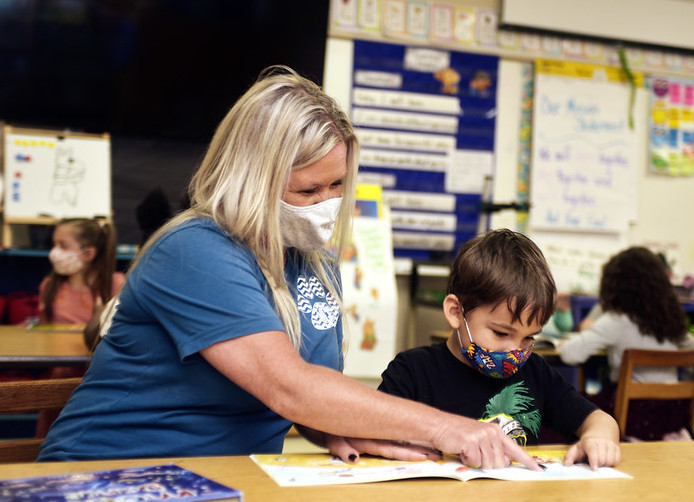
Something I’ve always appreciated about being an educator is the challenge of being a lifelong learner. This year in particular, educators and students alike have worked hard to learn new ways to teach and learn during a global pandemic.
As we focus on pandemic recovery, we have a tremendous opportunity and responsibility ahead of us. We are experiencing an infusion of financial resources unlike anything we’ve seen before. Leaders are moving quickly to determine how to leverage funds to ensure the best possible outcomes for kids. It’s both a hopeful and overwhelming moment for education leaders, but there are practices that we know work, including high-dosage tutoring.
I recall my early experiences as a new teacher when I would tutor students during the summer. I remember feeling the weight of the responsibility that parents trusted me to provide extra support to their children. I also remember feeling like I was working in isolation without much guidance. I was unsure of how to approach the sessions, what materials I should use, and how I would effectively measure my students’ progress.
Since that time, we have learned a great a deal about how to implement effective tutoring. SCORE recently hosted a SCORE Institute on High-Dosage Tutoring to explore the research and spotlight emerging work from districts in Tennessee. We’re fortunate that the research on tutoring is clear — there are proven ways to build effective tutoring programs. In particular, we know the following components of tutoring programs yield better results for students:
- Frequency: Tutoring is most likely to be effective when delivered at least three times per week for at least 30 minutes per session. A consistent tutor helps build the relationship that supports student learning.
- Tutor and group size: Tutors can effectively instruct up to four students at a time, but these higher ratios require a greater level of tutor skill. If using novice tutors, one or two students per tutor is ideal.
- Scheduling: Tutoring that takes place during the school day tends to result in greater learning gains than after-school tutoring. This approach also ensures equitable access for all students.
- Training: Tutors who are not educators should receive robust training on content, instructional strategies, and relationship-building. Current teachers who serve as tutors will need training on expectations, routines, and progress monitoring.
- Progress monitoring: Tutoring programs that use ongoing informal assessments allow tutors to tailor their instruction more effectively. Ideally, data should also be collected on students’ perceptions of tutoring to support the goal of building students’ confidence with the content.
While we have a strong research base to work from, we also know districts will need to build programs tailored to their own unique needs. That’s why we were fortunate to have Dr. Jeanne Barker, superintendent of Lenoir City Schools, and Dr. Keri Randolph, executive officer for strategic investments for Metro Nashville Public Schools, join us to share about the tutoring programs they’ve recently implemented and already begun to refine.
I’m so inspired by the early efforts of these districts to design intentional tutoring programs for their students, which they will continue to strengthen and scale over time. I’m also particularly inspired by their courage to broadly share their work in progress, knowing we have much to learn from each other during the urgency of this moment.
I think back to that responsibility I felt as a young teacher and tutor, and now, in this moment, we are all feeling the responsibility of using our resources wisely to accelerate student learning. With high-dosage tutoring, we know what works. We have a moment to use that knowledge to get this right and emerge from the pandemic with practices that better serve students. If we to commit to our own continued learning, if we embrace shifts in our thinking around what it means to “do tutoring,” and if we work together to share our successes and challenges with one another, I know we can and will build stronger systems for students.
Dr. Sharon Roberts is chief K-12 impact officer at SCORE. Director of Educator Engagement Leigh Cooksey contributed to this post.
Read more:
